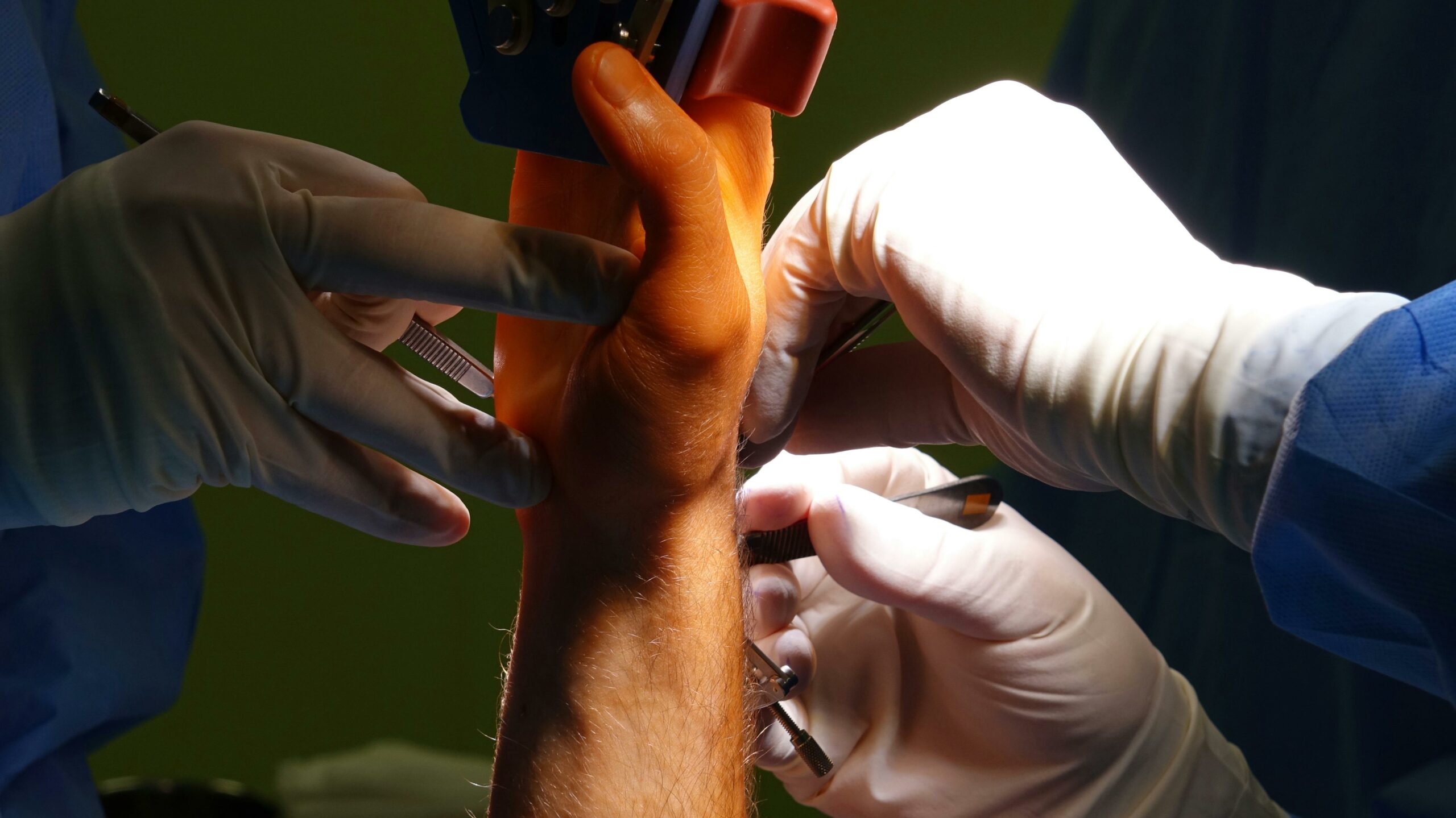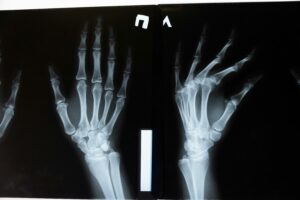
Advanced Wrist Reconstruction Surgery: What Patients Need to Know
The wrist is a complex joint, which is the most important in hand function, movement, and stability. Trauma, arthritis, ligament tears, or congenital abnormalities can cause chronic pain, limited motion, and reduced grip strength. Wrist reconstruction surgery becomes an option to restore function and improve quality of life when conservative treatments like medications, splinting, and physiotherapy fail to provide relief.
With advancements in surgical techniques and medical technology, advanced wrist reconstruction surgery now offers greater precision, faster recovery, and better long-term outcomes. Patients experiencing persistent wrist pain, joint instability, or significant functional limitations can benefit from these cutting-edge procedures.
This guide will cover:
- What is wrist reconstruction surgery?
- Conditions that require wrist reconstruction
- Types of wrist reconstruction procedures
- Recovery and rehabilitation after surgery
- What patients should expect before, during, and after surgery
- Frequently asked questions
- Why choose Dr. Marouane for advanced wrist reconstruction surgery
If you or a loved one is considering wrist reconstruction surgery, understanding the procedure, benefits, and recovery process will help you make informed decisions about your treatment options.
What is Wrist Reconstruction Surgery?
Wrist reconstruction surgery is a surgical procedure designed to restore stability, mobility, and function to a damaged or deteriorating wrist joint. The surgery may involve:
- Repairing torn ligaments
- Reconstructing damaged cartilage
- Fusing bones for stability
- Replacing the joint with an artificial implant
Advanced reconstruction surgery of the wrist aims at removing pain and enhancing mobility for a stronger grip in the hands. The decision on whether to perform minimally invasive arthroscopy or open surgical techniques will depend on the extent of the condition.

Conditions That Require Wrist Reconstruction Surgery
Wrist function can be compromised by many conditions, including chronic pain, instability, and joint damage. Surgery may become necessary if the conservative treatments cannot help alleviate pain.
1. Post-Traumatic Wrist Injuries
- Fractures, ligament tears, and dislocations can lead to chronic instability and arthritis.
- If the injuries are not treated, it may lead to deformities and long-term dysfunction.
2. Wrist Arthritis (Osteoarthritis & Rheumatoid Arthritis)
- Osteoarthritis is a wear–and–tear condition in which cartilage loss and stiffness of the joint occur.
- Rheumatoid arthritis results in joint inflammation, deformity, and intense pain.
3. Carpal Instability
- A condition where the ligaments fail to stabilize the bones of the wrist, causing pain and weakness.
- Commonly due to trauma or overuse injuries.
4. Kienböck’s Disease
- A rare condition in which the lunate bone suffers a loss of blood supply, causing progressive pain and stiffness of the wrist.
5. Congenital Wrist Deformities
- Some are born with an abnormal development of the wrist, which affects movement and function.
Patients suffering from persistent wrist pain or weakness or having difficulties performing their daily routines should report to specialists to assess whether wrist reconstruction is the treatment.
Types of Wrist Reconstruction Surgery
The type of wrist reconstruction surgery will depend on the extent of the damages, need, and functionality of the wrist.
1. Ligament Reconstruction
- Repair of torn or overstretched ligaments in order to restore the stability of the wrist.
- For conditions such as scapholunate instability and chronic ligament tears.
2. Partial Wrist Fusion (Limited Arthrodesis)
- Connects some bones in the wrist to preserve movement but reduce pain.
- Recommended for early-stage arthritis or isolated joint damage.
3. Total Wrist Fusion (Complete Arthrodesis)
- Connects the entire wrist joint, removing all movement to stop pain.
- Indicated for advanced arthritis or post-traumatic damage to the wrist.
4. Wrist Replacement (Wrist Arthroplasty)
- Replacing the damaged joint with an artificial implant.
- This is recommended for patients with advanced arthritis who need preservation of mobility.
5. Bone Grafting and Joint Resurfacing
- This is applied for Kienböck‘s disease or bone loss caused by trauma or disease.
- Bone graft is obtained from another portion of the body to reconstruct the wrist.
6. Wrist Arthroscopy (Minimally Invasive Surgery)
- The surgeon uses a small camera and instruments inserted through very small incisions to repair the damaged structures.
- This leads to faster recovery, minimal scarring, and less post-operative pain.
Selection of appropriate procedure is based on the condition of the joint, activity level of the patient, and long-term functional goals.
Potential Complications and How They Are Managed
Wrist reconstruction surgical intervention is not free of risk, despite this, modern surgical planning, advanced techniques, and post-operative care have minimized the complications to a minimum, hence optimal recovery.
1. Infection
- Low because the technique is done under sterile conditions. Infections can still occur.
- Treated with antibiotics and proper wound care.
- In some cases, deep infections are further treated with removal of infected tissue.
2. Joint Stiffness and Reduced Range of Motion
- Depending on the type of surgery, patients can be at risk of experiencing stiffness in joints, which is common with wrist fusion procedures.
- Managed with physiotherapy, early stretching, and gradual mobility exercises.
- Minimally invasive techniques help maintain maximum motion.
3. Nerve Damage
- The wrist is very sensitive with nerves controlling sensation and movement.
- Careful nerve-sparing techniques minimize damage.
- If nerve irritation is present, it is usually transient and resolves over time.
4. Implant Wear or Loosening (for Wrist Replacement)
- Wrist replacements are expected to last 10-15 years or more.
- The patient should not participate in high-impact activities that can increase wear.
- Regular follow-up will help in the early detection of any problem related to the implant.
5. Failure of Bone Fusion (for Wrist Fusion Surgery)
- Fusion is successful if the bone heals properly.
- Patients are advised to observe post-operative care, among which smoking should be avoided because it slows bone healing.
- Additional bone grafting is necessary if non-union occurs.
Most complications are uncommon and can be addressed with good proactive surgical technique and comprehensive post-operative care.
Recovery and Rehabilitation After Surgery
The success of wrist reconstruction surgery largely depends on post-operative care and rehabilitation. A structured recovery plan helps restore strength, flexibility, and function.
1. Immediate Post-Surgery Phase (Weeks 1-6)
- The wrist is immobilized with a cast or splint to allow healing.
- Pain and swelling are managed with medications and ice therapy.
2. Early Rehabilitation (Weeks 6-12)
- Gentle range-of-motion exercises to prevent stiffness.
- Light grip strengthening exercises to regain hand function.
3. Strengthening Phase (Months 3-6)
- Progressive resistance training to restore wrist stability.
- Functional exercises tailored to patient needs and activity level.
4. Return to Normal Activities (6-12 Months)
- Full recovery can take 6-12 months, depending on the procedure and patient compliance.
- It may require longer rehabilitation for athletes or those who use their hand highly.
Maintaining physiotherapy protocols, activity modification and strengthening exercises would lead to a successful recovery.
What Patients Should Expect Before, During, and After Surgery
Before Surgery
- A detailed evaluation which includes X-rays, MRI, or CT scans of the joint condition
- Discussion of the best surgical approach based on functionality and long-term goals.
- Pre-operative information on medication, lifestyle adjustments, and readiness for surgery
During Surgery
- Carried out with regional or general anesthesia.
- Time taken from one to three hours depending on the procedure
- If possible, the procedure will use minimally invasive techniques so that recovery is shortened.
After Surgery
- Patient monitored for swelling and pain
- Limited movement of the patient as needed with splint or cast
- Physiotherapy is conducted when healing starts in order to improve mobility and strength.
Patients should follow the postoperative instructions to their best ability to achieve the best results.
Frequently Asked Questions (FAQs)
1. Who is a good candidate for wrist reconstruction surgery?
Patients with chronic wrist pain, instability, or arthritis that does not respond to conservative treatments.
2. How long does wrist reconstruction surgery take?
The procedure typically lasts one to three hours, depending on complexity.
3. Will I regain full wrist movement after surgery?
Recovery varies. Total wrist fusion eliminates movement, while wrist replacement and ligament reconstruction preserve motion.
4. How soon can I return to work or sports after surgery?
Light activities resume in 6-8 weeks, while full recovery may take 6-12 months.
5. What are the risks of wrist reconstruction surgery?
Like any surgery, risks include infection, stiffness, nerve damage, or implant failure. Choosing an experienced surgeon minimizes complications.
Why Choose Dr. Marouane for Advanced Wrist Reconstruction Surgery?
- Specialist in Complex Wrist Procedures: Expertise in arthroscopy, joint replacement, and reconstructive surgery.
- Advanced Minimally Invasive Techniques: Reducing pain, scarring, and recovery time.
- Personalized Treatment Plans: Tailored to each patient’s specific condition and activity needs.
- High Success Rates: Proven track record in restoring wrist function and reducing pain.
- Comprehensive Post-Surgical Support: Close monitoring and rehabilitation planning for long-term recovery.
Conclusion
Wrist reconstruction surgery offers patients a chance to restore function, relieve pain, and regain mobility. With advanced surgical techniques and a dedicated rehabilitation plan, individuals can return to daily activities with improved wrist strength and stability.
Expert care, tailored for you! Book your consultation with Dr. Marouane today at +971 54 422 6123.







